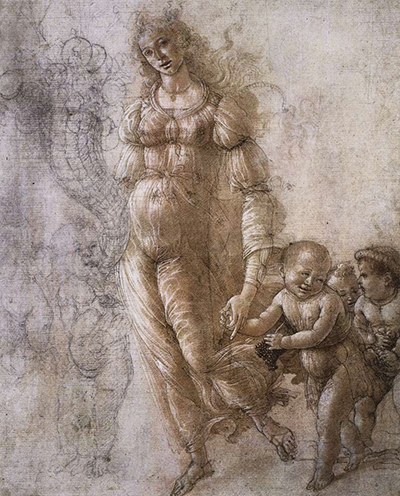 Buy Art Prints Now
Buy Art Prints Nowfrom Amazon
* As an Amazon Associate, and partner with Google Adsense and Ezoic, I earn from qualifying purchases.
Allegory of Abundance is one of the finest drawings from the Early Renaissance
Sandro Botticelli's drawings have proven famously hard to date, with this sketch labelled as circa 1480-85. This is one of his more significant contributions in this medium, with the original artwork now on display at the British Museum in London.
Similarities to his Primavera fresco have been the main clue in chronicling this particular artwork. Botticelli used pen, brown ink and brown wash over black chalk upon pink tinted paper in order to complete this drawing. On the left of the composition you will find two putti and a cornucopia in black chalk. The artwork's dimensions are 25.3cm x 31.7cm.
The main elements of the figure dominate the movement of her garment, placing the emphasis on the female's figure. It is probable that this would have been achieved by going over the anatomy several times, darkening in a little more each time.
Portrait drawings have played an important role in the oeuvre of main famous artist's careers. The simplicity of this medium allows the masters to display their raw genius and lay in bare for all to see. This is perhaps why some of the great names have had their original drawings purchased by other artists, looking to learn from their idols. Albrecht Durer and Rembrandt drawings were also sought after for this very reason.
As with another of Botticelli's figurative drawings, Minerva, it is likely that Allegory of Abundance was produced by the artist as a way of leading his assistants who often helped him out on larger projects. Botticelli would request specific attention to small elements of a composition and his studies would help ensure that they were delivered in the correct manner.
St John the Baptist is another good example of this approach, with the key elements of this drawing being re-discovered across several other large scale frescos.
Whilst the Renaissance era had many highly gifted artists, there are also some exceptional sketching talents from more recent artistic periods. For example, Klimt drawings will bring the beauty of the female body to your eyes, whilst Turner's sketchbook offers a simiarly stunning approach to landscapes.



